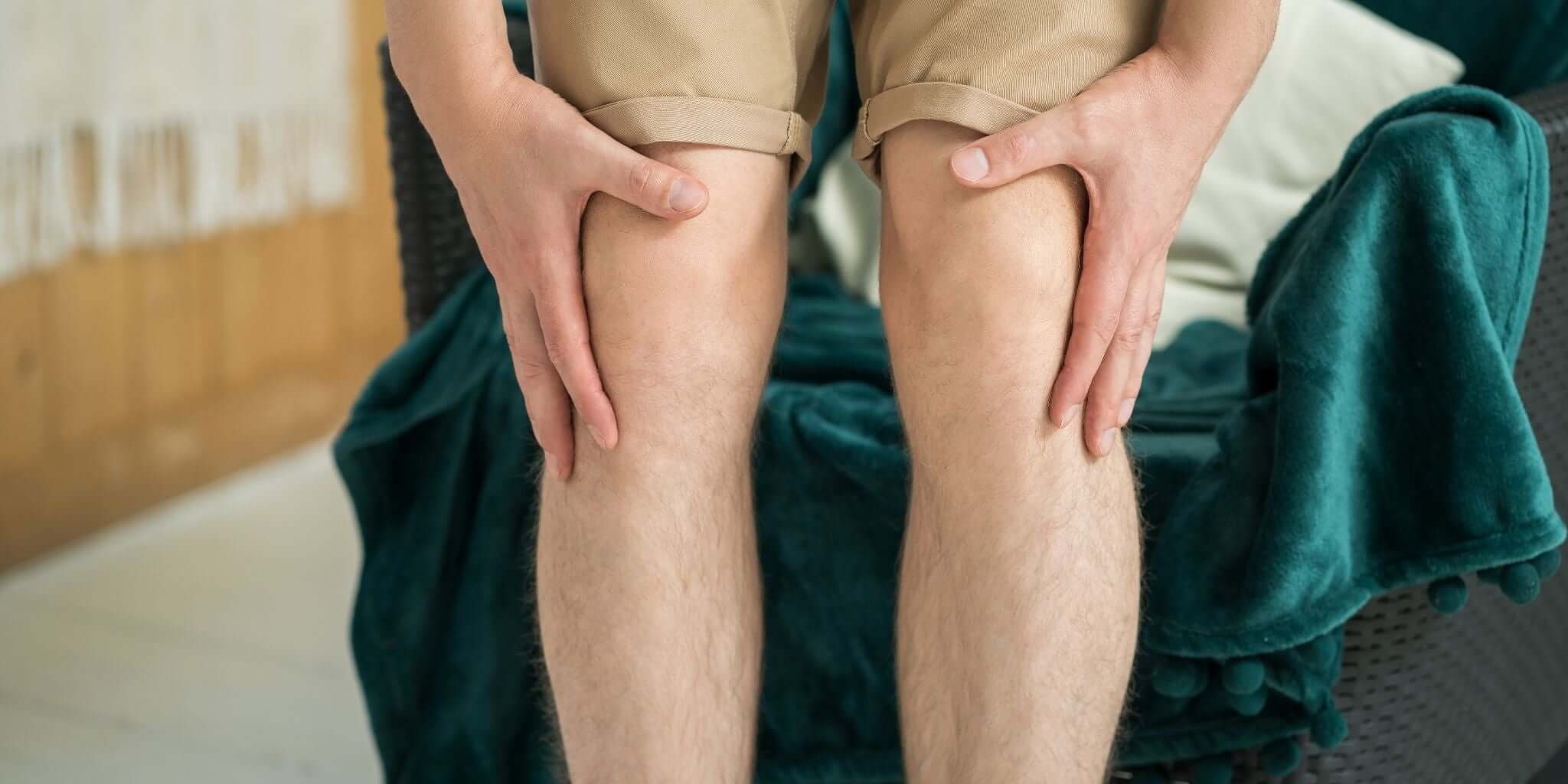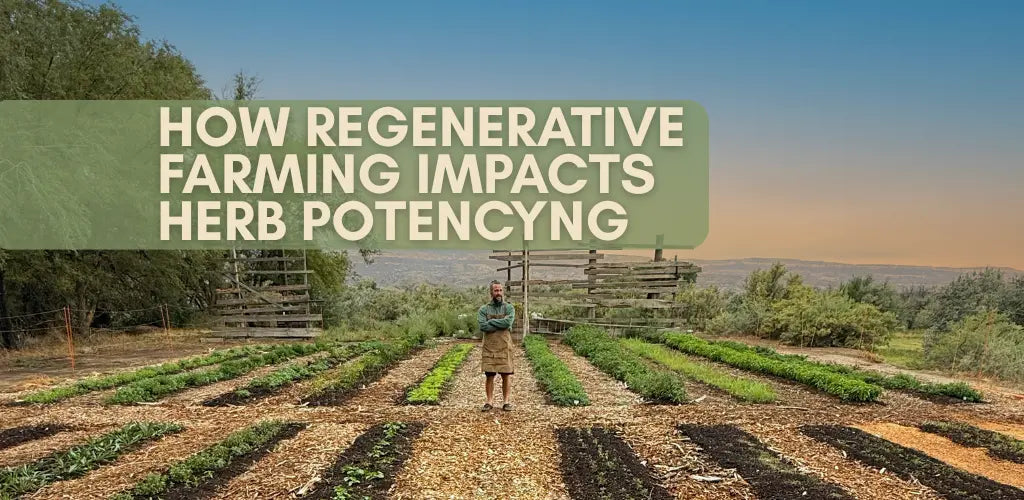Understanding Restless Leg Syndrome (RLS)
Restless Leg Syndrome (RLS) is a common neurological condition that causes an irresistible urge to move the legs, often accompanied by uncomfortable sensations such as tingling, itching, or pulling. These symptoms typically worsen at night, disrupting sleep and leaving sufferers fatigued and frustrated.
While medical treatments are available, many turn to natural remedies for holistic relief. Herbs offer a gentle and effective way to calm restless legs, improve circulation, and promote better sleep. In this article, we'll explore the best herbs for managing RLS and how to incorporate them into your wellness routine.
The History and Science Behind Herbal Remedies for Restless Leg Syndrome

Herbal remedies have been used for centuries to treat various ailments, including conditions resembling Restless Leg Syndrome (RLS). Exploring the roots of these traditional practices adds depth to our understanding of how herbs can provide relief today.
Ancient Wisdom: Herbal Treatments Through the Ages
-
Traditional Chinese Medicine (TCM):
- In TCM, herbs like Ginkgo Biloba were used to enhance blood circulation, which was believed to alleviate leg discomfort and promote balance within the body.
-
Ayurveda:
- The ancient Indian practice of Ayurveda utilized Ashwagandha and Holy Basil to calm the nervous system and reduce stress-related ailments.
-
European Folk Medicine:
- Herbs like Valerian Root and Chamomile were staples in European remedies for muscle relaxation and improved sleep.
Modern Science Validates Ancient Practices
While these traditional uses were guided by observation and experience, modern science provides a deeper understanding of how herbs work:
-
Valerian Root:
- Research shows that Valerian contains compounds that interact with GABA receptors in the brain, promoting relaxation and reducing muscle spasms.
-
Ginkgo Biloba:
- Clinical studies demonstrate that Ginkgo enhances blood flow and oxygen delivery, reducing discomfort caused by poor circulation.
-
Lavender:
- Studies reveal Lavender's ability to reduce anxiety and improve sleep quality through its calming aroma and chemical properties.
A Natural Solution for a Modern Problem
Today, as more people experience sleep disruptions and stress-related conditions, herbal remedies are seeing a resurgence. They offer a safe, natural alternative to pharmaceutical treatments, often with fewer side effects.
By connecting ancient practices with modern research, we see how these time-tested herbs remain relevant in addressing the challenges of RLS. Whether you're inspired by their historical significance or intrigued by their scientific benefits, incorporating herbs into your routine can be a transformative experience.
What Is Restless Leg Syndrome?
Definition of RLS
Restless Leg Syndrome, or Willis-Ekbom disease, is a neurological disorder characterized by:
- An uncontrollable urge to move the legs.
- Unpleasant sensations, such as crawling, tingling, or burning.
- Symptoms that worsen during periods of rest or inactivity, particularly at night.
Causes and Triggers
While the exact cause of RLS remains unclear, contributing factors include:
- Nutritional Deficiencies: Low levels of iron, magnesium, or folate.
- Chronic Conditions: Diabetes, kidney disease, or nerve disorders.
- Lifestyle Triggers: Stress, lack of exercise, and poor sleep habits.
Impact on Daily Life
- Sleep Disruption: Difficulty falling or staying asleep, leading to fatigue.
- Emotional Stress: Anxiety and frustration from persistent symptoms.
- Decreased Productivity: Fatigue affecting work performance and daily activities.
How Herbs Can Help Manage RLS

Herbs address RLS symptoms through multiple mechanisms:
- Relaxation and Sleep Support: Calming herbs like Valerian Root and Chamomile promote restful sleep.
- Improved Circulation: Herbs such as Ginkgo Biloba enhance blood flow to the legs.
- Stress Reduction: Adaptogens like Ashwagandha and Holy Basil ease nervous system tension.
- Muscle Relaxation: Herbs like Passionflower reduce muscle spasms and discomfort.

Lavender Flower Herb
Premium cut and sifted lavender flowers, perfect for creating calming teas, relaxing bath soaks, and circulation-boosting herbal oils. Our lavender promotes deep relaxation and helps ease nighttime restlessness naturally.
Shop Lavender FlowersTop 10 Herbs for Restless Leg Syndrome

1. Valerian Root
Benefits:
- Promotes relaxation and better sleep by increasing GABA levels in the brain.
- Reduces muscle spasms and nighttime restlessness.
How to Use:
- Brew 1 teaspoon of dried Valerian Root in hot water and drink 30 minutes before bedtime.
- Available as capsules or tinctures for convenience.
2. Lavender
Benefits:
- Reduces anxiety and promotes calmness.
- Improves sleep quality when used aromatically or topically.
How to Use:
- Add dried Lavender to a warm bath or use essential oil in a diffuser.
- Massage diluted Lavender oil onto your legs before bed for soothing relief.
3. Passionflower
Benefits:
- Calms the nervous system and reduces stress-related RLS symptoms.
- Enhances sleep by increasing GABA activity in the brain.
How to Use:
- Brew Passionflower tea or take it as a tincture before bedtime.
4. Chamomile
Benefits:
- Gentle sedative effects help improve sleep quality.
- Anti-inflammatory properties reduce leg discomfort.
How to Use:
- Drink a cup of Chamomile tea 30 minutes before bed.
- Combine with Lavender for enhanced relaxation.
5. Ginkgo Biloba
Benefits:
- Enhances blood circulation, which may reduce RLS symptoms caused by poor blood flow.
- Supports overall vascular health.
How to Use:
- Take Ginkgo as a supplement or brew a tea using dried leaves.
- Pair with Cayenne Pepper in topical oils for improved circulation.
6. Ashwagandha
Benefits:
- Reduces cortisol levels, alleviating stress that can exacerbate RLS.
- Supports overall nervous system health.
How to Use:
- Take Ashwagandha as a capsule or mix the powder into warm milk before bed.
7. Holy Basil (Tulsi)
Benefits:
- An adaptogen that reduces stress and promotes relaxation.
- Supports healthy circulation and overall vitality.
How to Use:
- Drink Holy Basil tea daily or take it as a supplement.
8. Peppermint
Benefits:
- Provides a cooling sensation that soothes irritated leg muscles.
- Improves circulation when used topically.
How to Use:
- Apply diluted Peppermint oil to your legs with a gentle massage.
- Drink Peppermint tea to relax the digestive system and reduce nighttime discomfort.
9. Cayenne Pepper
Benefits:
- Boosts circulation and reduces inflammation.
- Helps alleviate pain associated with RLS.
How to Use:
- Mix Cayenne Pepper with a carrier oil and massage it onto your legs.
- Consume small amounts in food to support circulation from within.
10. Lemon Balm
Benefits:
- Calms the nervous system and reduces anxiety.
- Promotes restful sleep and relaxation.
How to Use:
- Brew Lemon Balm tea or use it in combination with Chamomile or Valerian.

Goddess Body Balm
Luxurious blend of rose, calendula, and lavender in a nourishing body butter. Perfect for massaging into tired legs before bedtime, this balm soothes muscles, hydrates skin, and promotes relaxation with every application.
Shop Goddess BalmHerbal Remedies and Recipes for RLS Relief
1. Calming Nighttime Tea Blend

Ingredients:
- 1 tsp dried Valerian Root
- 1 tsp dried Lavender Flowers
- 1 tsp dried Chamomile
Instructions:
- Combine herbs in a teapot.
- Add boiling water and steep for 10 minutes.
- Strain and sip 30 minutes before bedtime to relax muscles and improve sleep.
2. Circulation-Boosting Herbal Oil

Ingredients:
- 1/4 cup olive oil
- 1 tsp dried Ginkgo Biloba
- 1 tsp dried Cayenne Pepper
Instructions:
- Gently heat the olive oil and add the herbs.
- Allow the mixture to infuse for 1 hour, then strain.
- Massage the oil onto your legs to stimulate circulation and reduce discomfort.
3. Relaxing Lavender Bath Soak

Ingredients:
- 2 tbsp dried Lavender Flowers
- 1/4 cup Epsom salts
Instructions:
- Combine Lavender and Epsom salts in a bowl.
- Add the mixture to warm bathwater.
- Soak for 20 minutes to relax muscles and calm the nervous system.
4. Stress-Reducing Passionflower Tincture

Ingredients:
- 1 cup dried Passionflower
- 2 cups high-proof alcohol (e.g., vodka)
Instructions:
- Place the Passionflower in a glass jar and cover with alcohol.
- Seal and store in a cool, dark place for 4–6 weeks, shaking occasionally.
- Strain and store in a dropper bottle. Take 1–2 droppers full before bed to reduce stress and promote sleep.

St. John's Wort Tincture
Powerful herbal tincture crafted to support emotional balance and calm the nervous system. Our St. John's Wort helps reduce stress-related discomfort, making it an excellent companion for managing RLS symptoms naturally.
Shop St. John's WortTips for Managing RLS Naturally
-
Stay Active:
- Gentle exercises like yoga or walking can improve circulation and reduce symptoms.
-
Establish a Bedtime Routine:
- Combine herbal remedies with relaxing activities like meditation or reading.
-
Avoid Triggers:
- Reduce caffeine and alcohol intake, which can worsen RLS symptoms.
-
Maintain a Regular Schedule:
- Going to bed and waking up at the same time each day supports your body's natural rhythms.
Ease RLS Naturally with the Power of Herbs

Restless Leg Syndrome can disrupt your life, but natural remedies like Valerian, Lavender, and Ginkgo Biloba provide effective relief. By incorporating these herbs into your routine, you can reduce symptoms, improve sleep, and reclaim your nights.





